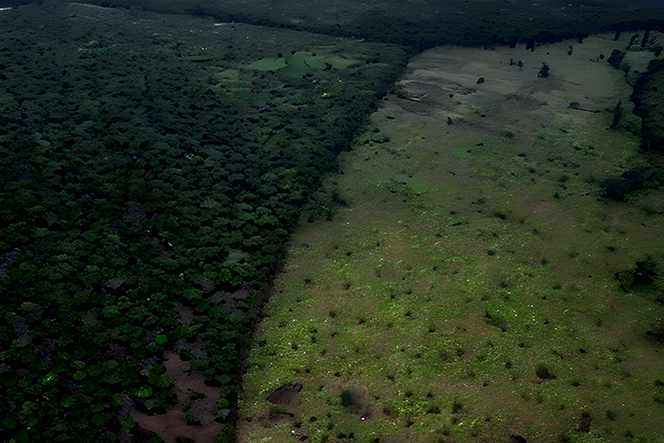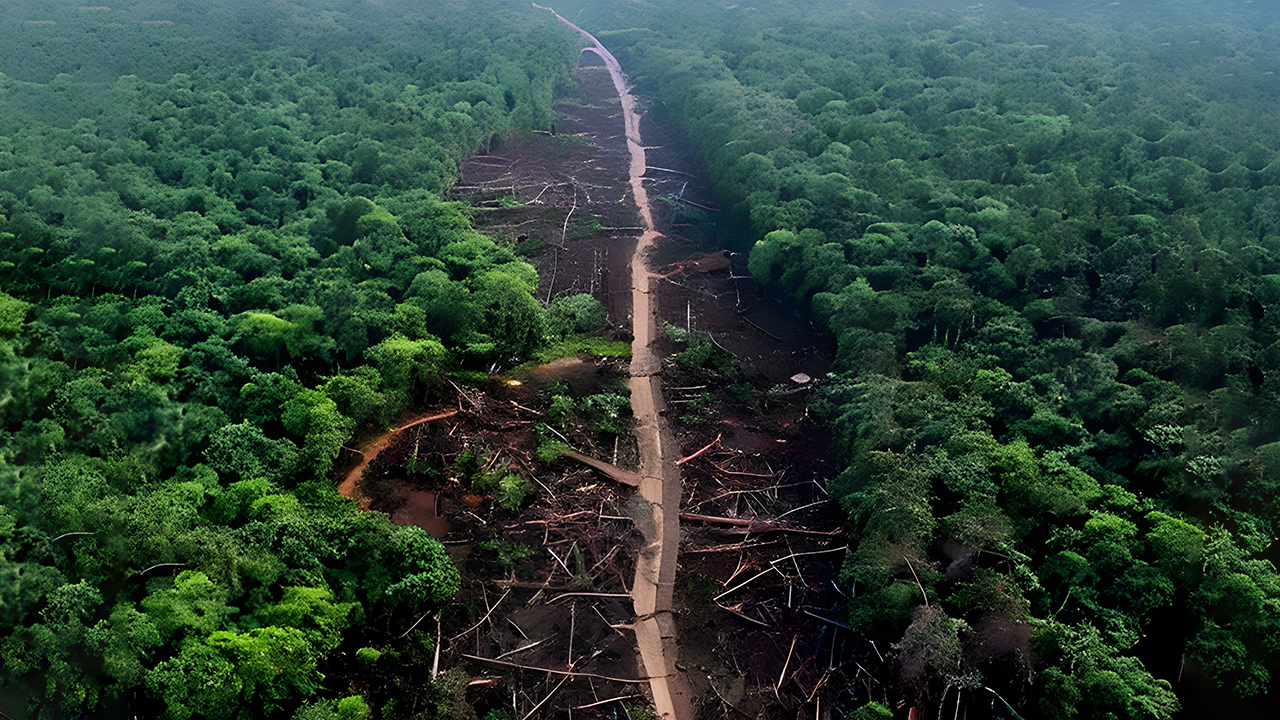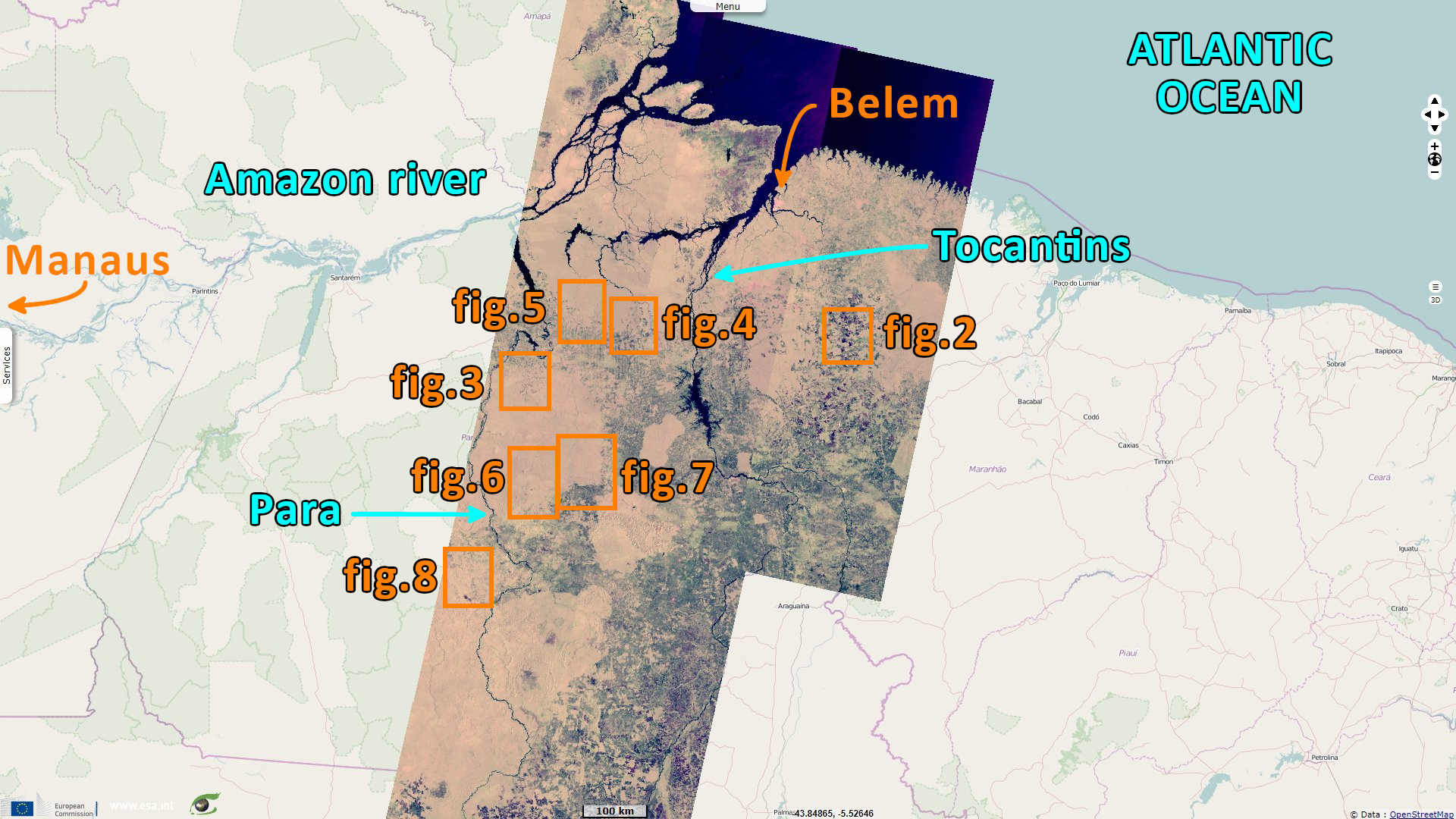Amazon deforestation worsens since 2018 after a decade of decrease, Brazil
Sentinel-1 CSAR IW acquired on 26 September 2018 from 08:57:23 to 09:00:43 UTC
Sentinel-1 CSAR IW acquired on 01 October 2018 from 09:05:19 to 09:09:04 UTC
...
Sentinel-1 CSAR IW acquired on 29 September 2022 from 08:57:36 to 09:01:21 UTC
Sentinel-1 CSAR IW acquired on 04 October 2022 from 09:05:41 to 09:09:26 UTC
Sentinel-1 CSAR IW acquired on 01 October 2018 from 09:05:19 to 09:09:04 UTC
...
Sentinel-1 CSAR IW acquired on 29 September 2022 from 08:57:36 to 09:01:21 UTC
Sentinel-1 CSAR IW acquired on 04 October 2022 from 09:05:41 to 09:09:26 UTC
Keyword(s): Land, forestry, deforestation, emergency, wildfire, agriculture, Brazil

"An aerial view of a deforested area of the Amazon rainforest during a flight from Manaus to Manicore, Amazonas state, Brazil, on 6 June 2022." - Mauro Pimentel, AFP
Brazil has lost 69 million hectares of native vegetation in the past 30 years. Between 2004 and 2010, former left-wing president Lula da Silva reduced deforestation by 80%. Since the far-right president took office in 2019, average annual deforestation in the Brazilian Amazon has increased by more than 75% from the previous decade, according to official figures. The area deforested from the beginning of his mandate to the end of 2021 is larger than the size of Belgium. In 2021, the Amazon lost an average of eighteen trees per second.
Camilo Rocha wrote for CNN: "Illegal activity in the Amazon is gaining momentum as the last months of Brazilian President Jair Bolsonaro’s administration wind down, experts tell CNN. According to specialists and people on the ground, loggers, ranchers, miners and others seeking profit are tearing apart the protected region faster than ever, motivated by fears that Bolsonaro’s re-election bid could fail – and that the next president could crack down harder on such activity."
"From illegal miners openly declaring their support to an environmental minister’s resignation after investigations tying him to illegal log-smuggling, Bolsonaro administration is seen as an ally to environmental law-breakers in the Amazon. Since his 2018 electoral campaign, Bolsonaro has advocated against what he sees as excessive environmental legislation and protections that supposedly hinder activities such as agriculture and mining, including in indigenous protected territories."
"The President is also a keen supporter of a set of five draft bills going through Congress known by activists as the 'destruction package.' These laws include proposals to give property titles to land grabbers, allow mining in indigenous lands and loosen environmental licensing. Although they have not been approved, Bolsonaro’s continuous defense of such issues is seen by NGOs and opposition politicians as an incentive to those on the ground."
Reuters highlights the role of the Amazon rainforest in the climate: "Brazil, as home to the majority of the world’s largest rainforest, was seen as crucial to that global pact. The Amazon’s trees absorb vast amounts of carbon dioxide that would otherwise warm the planet. But some scientists warn that if enough of the forest is destroyed, it could cross a tipping point, dry out and turn into savannah. That would release huge amounts of carbon, virtually ensuring the world cannot hit the targets laid out to avoid the worst effects of climate change."
CNN adds: "Destruction of the Amazon poses a direct threat to the global climate. 'When we deforest we are transforming the Amazon into an accelerator of climate change because it starts releasing more carbon into the atmosphere, reducing rain and increasing temperatures in Brazil and the world,' said Luciana Gatti, a leading researcher at Brazil’s Space Research Institute (INPE)."
Agriculture and livestock remain the main 'pressure vectors' for deforestation, for which they are 97% responsible. In the northern state of Para, illegal mining also exerts a lot of pressure, according to the study. "'International trade is a driver of deforestation. If other countries stopped buying the fruits of this activity, destruction would halt,' says Gatti, who adds that there should be a global movement to stop buying wood from Brazil. It has started to happen. The European Union has advanced a plan to require that products sold in the bloc must not come from deforested or degraded land. The new legislation establishes that companies selling in the EU have to verify items such as cattle, cocoa, coffee, palm-oil, soya and wood have not originated from such areas."

"A deforested and burnt area is seen on a stretch of the BR-230 in Humaitá, Amazonas State, Brazil, on September 16, 2022." - Michael Dantas, AFP










